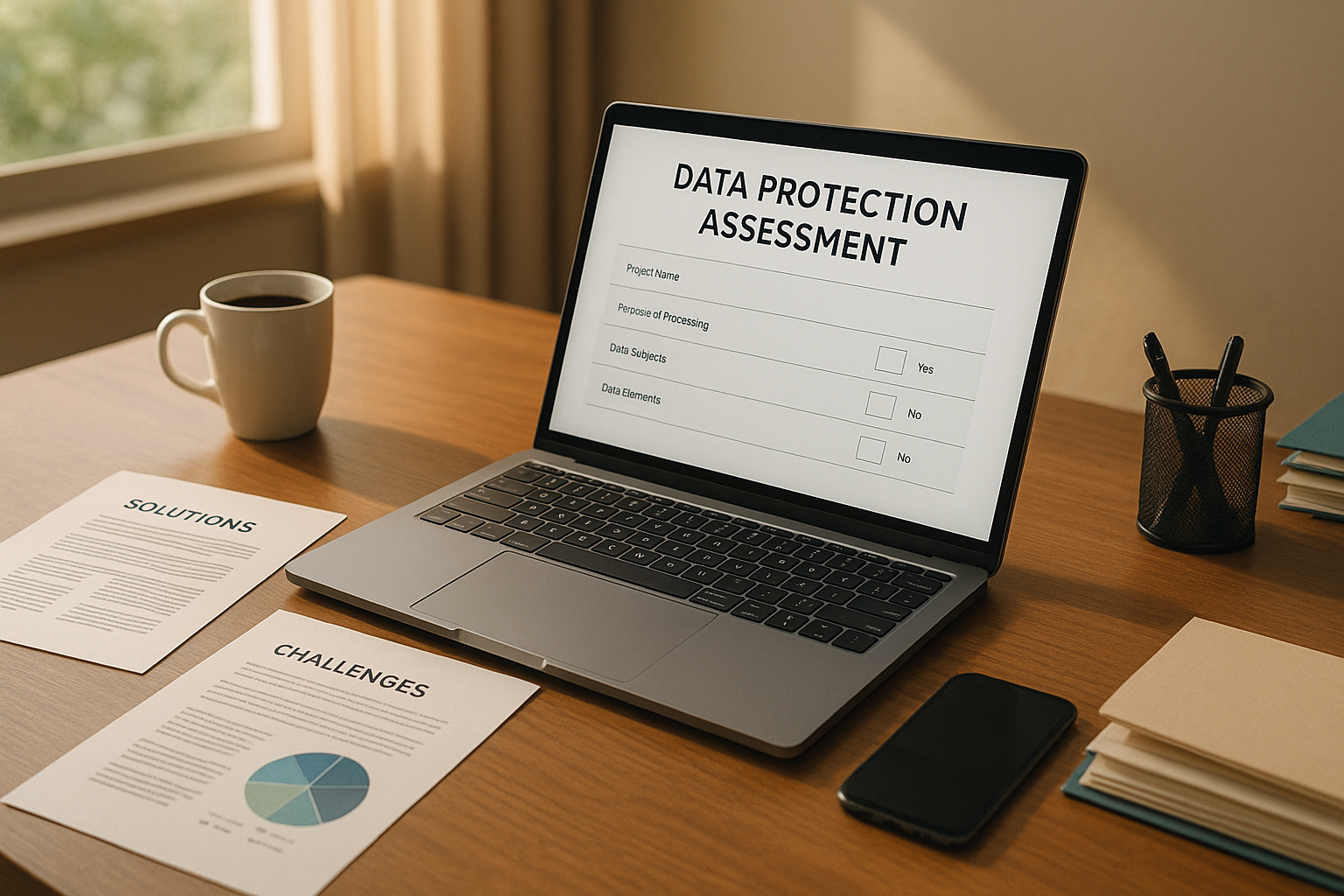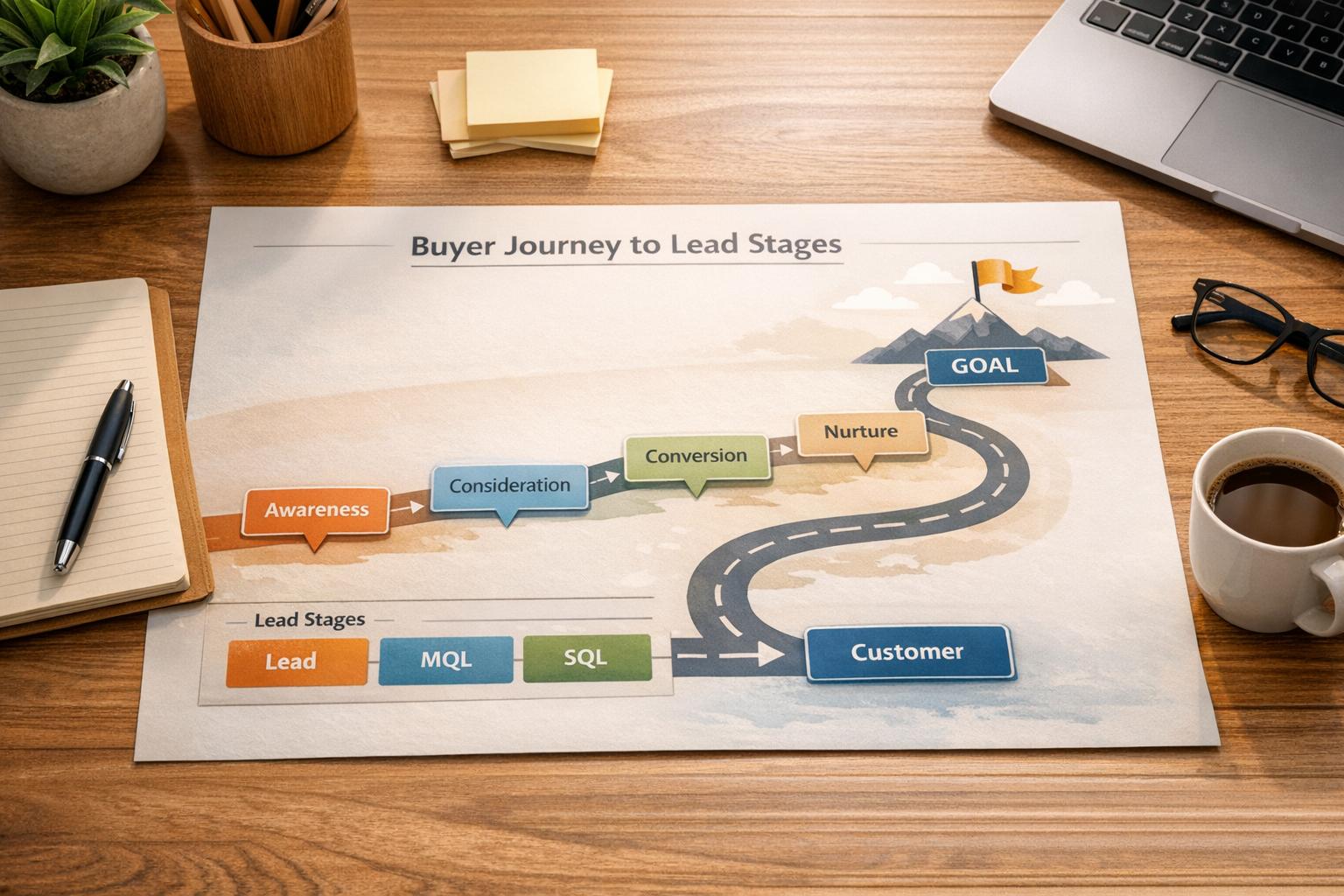7 DPIA Challenges and Solutions

A Data Protection Impact Assessment (DPIA) is essential for identifying privacy risks when processing personal data. Without it, organizations risk hefty fines or compliance issues. But many find DPIAs challenging due to time-consuming processes, unclear data flows, or evolving privacy laws.
Here’s the quick fix:
- Automate documentation with tools to save time.
- Improve team communication using centralized systems.
- Stay updated on privacy laws with regular training and automated compliance tracking.
- Map data flows to understand how data moves internally and externally.
- Standardize risk scoring to avoid inconsistent evaluations.
- Integrate legacy systems to modernize compliance processes.
- Track compliance records with automated tools for audits.
Addressing these issues not only ensures compliance but also builds trust with stakeholders. Modern tools like Reform simplify DPIAs with features like no-code forms, consent tracking, and real-time analytics.
Key takeaway: Automate, centralize, and standardize your DPIA process to save time, reduce compliance risks, and improve data protection.
Privacy Conference 2020 | DPIA in practice: typical hurdles and remedies
7 DPIA Challenges and Their Solutions
Here’s a closer look at common DPIA challenges organizations face and practical ways to address them.
1. Time-Consuming Documentation
Gathering data from various departments can slow down the DPIA process, making it cumbersome for privacy teams to complete assessments.
Solution: Leverage Automation Tools
Automation tools can significantly cut down documentation time while ensuring consistency. Look for platforms that offer features like:
- Automated updates to your data inventory
- Pre-built templates for assessments
- Real-time collaboration tools
- Version control to manage changes efficiently
2. Poor Team Communication
When departments work in silos, communication gaps can lead to incomplete assessments and missed compliance details.
Solution: Centralized Management Systems
A unified platform can bring all stakeholders together. Prioritize systems with:
- A shared document repository
- Role-based access for security
- Automatic notifications to keep everyone updated
- Dashboards to track progress in real time
3. Changing Privacy Laws
Privacy regulations are constantly evolving, with new state-level laws and updates creating a moving target for compliance.
Solution: Stay Updated on Legal Changes
Keep up with regulatory shifts by:
- Subscribing to updates from relevant authorities
- Joining professional privacy networks
- Using automated tools to monitor compliance
- Hosting regular training sessions for your team
4. Unclear Data Flows
Tracking how personal data moves within your organization - and through third-party processors - can be a struggle, especially for cross-border transfers.
Solution: Create Data Flow Maps
Develop detailed maps to track:
- Internal data processing activities
- Transfers to third-party vendors
- Cross-border data exchanges
- Data retention timelines
5. Inconsistent Risk Scoring
Without a standardized approach, different teams may assess privacy risks inconsistently, leading to uneven results and potential blind spots.
Solution: Adopt Standard Risk Metrics
Use a unified risk framework to classify risks as high, medium, or low, with clear actions for each:
- High risk - Requires immediate attention and management review
- Medium risk - Needs a structured mitigation plan
- Low risk - Can be monitored through periodic reviews
6. Old System Compatibility
Legacy systems often lack modern tools for privacy management, making it harder to maintain DPIA consistency.
Solution: Integrate Legacy Systems
Bridge the gap between old and new systems by implementing:
- API connectors for smooth data sharing
- Custom scripts for integration
- Tools to transform and standardize data
- Automated processes for syncing information
7. Weak Compliance Records
Inadequate documentation can create headaches during audits and make it harder to prove ongoing DPIA compliance.
Solution: Automate Documentation
Automated systems can help by:
- Tracking all DPIA activities
- Generating reports ready for audits
- Maintaining version histories for transparency
- Storing evidence to support compliance efforts
sbb-itb-5f36581
How Reform Helps with DPIA Data Collection

Tackling the challenges of DPIA data collection becomes much smoother with Reform. The platform simplifies the process with tools designed to enhance both compliance and efficiency.
Easy-to-Use Data Collection Forms
Reform's no-code form builder makes it simple to design custom DPIA questionnaires tailored to your needs. The platform's multi-step forms break down complex assessments into smaller, easier-to-complete sections, improving both response rates and data accuracy.
Here’s what makes Reform’s forms stand out:
- Conditional routing - Displays only the questions relevant to each respondent.
- Save-and-resume functionality - Perfect for lengthy assessments, allowing users to return later.
- Abandoned submission tracking - Captures partial responses to reduce data loss.
- Custom branding - Ensures forms align with your professional image.
Built-in Consent Management
Reform simplifies consent tracking by automatically documenting consent during form submissions, creating records that are ready for audits.
"Reform is what Typeform should have been: clean, native-feeling forms that are quick and easy to spin up. Reform does the job without a bunch of ceremony." - Derrick Reimer, Founder, SavvyCal
Ensuring Data Quality and Security
Reform incorporates validation features that protect the integrity of your data:
| Security Feature | Purpose | Benefit |
|---|---|---|
| Email Validation | Verifies email addresses in real-time | Reduces invalid contact information |
| Spam Prevention | Filters out automated submissions | Keeps data records clean and reliable |
With real-time analytics, teams can keep an eye on form performance and quickly address any issues. This data-focused approach has delivered tangible results, such as a 215% increase in qualified leads for B2B and SaaS companies, based on hundreds of tested strategies.
Reform also integrates seamlessly with existing compliance tools, ensuring a smooth data flow through:
- Direct API connections
- Webhook support
- CRM synchronization
- Marketing automation platform integration
These features ensure your DPIA process is ready for efficient and compliant management moving forward.
Conclusion: Implementing DPIA Solutions
Implementing DPIA solutions demands a well-thought-out strategy that tackles key challenges head-on. Organizations that address these hurdles not only ensure compliance but also gain operational advantages.
A successful DPIA implementation can minimize regulatory fines, enhance data governance, and build customer trust through transparent and proactive privacy practices.
To get the most out of your DPIA efforts, prioritize these areas:
| Implementation Area | Primary Focus | Expected Outcome |
|---|---|---|
| Risk Assessment | Standardized metrics and scoring | Consistent evaluations across all projects |
| Documentation | Automated collection and storage | Less manual work and better audit trails |
| Process Integration | Workflow automation and integration | Smoother operations and stronger compliance |
Modern tools like Reform can make these improvements easier to achieve. Reform simplifies DPIA processes by automating data collection, standardizing assessments, and providing thorough documentation. This ensures every step is handled efficiently and effectively. By incorporating such tools, organizations can overcome DPIA challenges and maintain robust compliance.
To gauge the success of your DPIA strategy, establish clear metrics, such as:
- Reduction in the time needed to complete assessments
- Decrease in compliance gaps
- Number of risks proactively identified and addressed
- Improved feedback from stakeholders
These measurable outcomes will help ensure your DPIA initiatives deliver tangible results.
FAQs
How can automation tools help streamline the DPIA process?
Automation tools can make the Data Protection Impact Assessment (DPIA) process much more efficient by cutting down on manual labor and reducing the chances of errors. Tasks like data collection, risk analysis, and report generation can be automated, freeing up valuable time for your team to focus on more critical aspects.
These tools also help maintain consistency and ensure compliance by standardizing workflows and delivering real-time updates on potential risks. Features such as conditional routing and real-time analytics enable businesses to address privacy concerns more effectively, all while keeping the process streamlined and hassle-free.
How can businesses stay updated with evolving privacy laws to maintain compliance?
Staying on top of evolving privacy laws means taking active steps to remain informed and prepared. One way to do this is by keeping an eye on updates from reliable regulatory bodies like the FTC or state-level privacy commissions. Signing up for newsletters or alerts from these organizations is a simple way to stay in the loop about new rules or changes.
Another key step is training your employees so they fully understand compliance requirements. To make monitoring easier, consider using tools or platforms that track regulatory changes and offer tailored insights for your business. And don’t underestimate the value of consulting a legal expert who specializes in data privacy - they can help ensure your practices meet the latest standards.
Why is mapping data flows important for identifying and addressing privacy risks during a DPIA?
Mapping data flows is an essential step in grasping how personal data travels through your organization. It reveals where data is collected, stored, processed, and shared, giving you a clearer understanding of potential privacy challenges.
By creating a visual representation of these flows, you can uncover weaknesses like unauthorized access, data breaches, or lapses in regulatory compliance. With this knowledge, you can take precise actions to address risks, strengthening data protection and ensuring adherence to privacy laws.
Related posts
Get new content delivered straight to your inbox

The Response
Updates on the Reform platform, insights on optimizing conversion rates, and tips to craft forms that convert.
Drive real results with form optimizations
Tested across hundreds of experiments, our strategies deliver a 215% lift in qualified leads for B2B and SaaS companies.


.webp)



